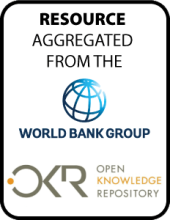Land Library
Welcome to the Land Portal Library. Explore our vast collection of open-access resources (over 74,000) including reports, journal articles, research papers, peer-reviewed publications, legal documents, videos and much more.
/ library resources
Showing items 1 through 9 of 90.The dynamics of urbanization and growth of the Latin American city is due to different geographical, economic, and social factors.
Durban is located within a global biodiversity hotspot, and still contains a wealth of biodiversity. Some of this is protected in nature reserves, but much of it is in private hands or in communal lands on the city’s periphery.
El aumento de los gases de efecto invernadero (GEI) en la atmósfera es el más comentado —y uno de los más estudiados— de los impactos humanos sobre el planeta por ser motor del cambio climático y de su consecuencia más general y conocida: el calentamiento global.
Los corregimientos de La Boquilla, Punta Canoa y Arroyo de Piedra están conformados principalmente por comunidades afrocolombianas organizadas en la actualidad por Consejos Comunitarios rurales de comunidades negras, reconocidas por la alcaldía del distrito de Cartagena de Indias y por el Ministe
This paper assesses the relation between
access to markets and cultivated land in Sub-Saharan Africa.
Making use of a geo-referenced panel over three decades
(1970-2005) during which the road network was significantly
The MEM is the World Bank's biannual flagship publication on Malaysia. It provides analysis of recent economic developments and the near-term outlook for Malaysia. Each publication also focuses on a special topic related to Malaysia's transformation into a high-income economy.
This Systematic Country Diagnostic (SCD)
explores how Uzbekistan can consolidate its recent
achievements and accelerate progress on the twin goals of
eradicating extreme poverty and promoting shared prosperity.
This report responds to a request from the Government of Timor-Leste (GoTL) and Dr. Mari Alkatiri.
Refugees in Uganda are either self-settled or live in organized settlements that cover approximately 350 square miles of land set aside by the government of Uganda.






